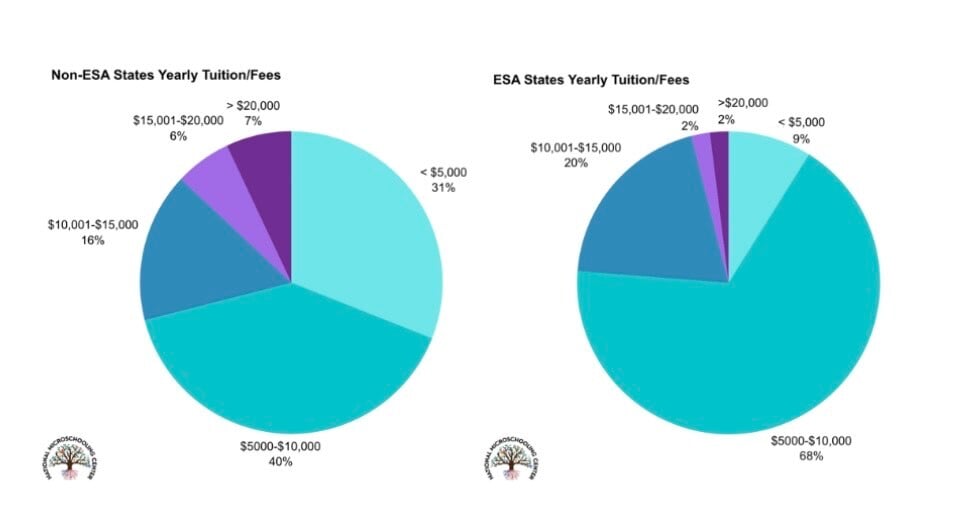America’s Military Veterans Bring Leadership to Today’s Microschooling Movement
The long-honored history of America’s military veterans is steeped in selfless acts to overcome obstacles and challenges and achieve good for the...

Can the nation’s nontraditional microschooling movement keep up the steady growth that has characterized its past four years in 2025? Yes. From the broad-lens view afforded by the National Microschooling Center’s work daily with microschools across the country, indications that 2025 will represent another strong growth year, in nearly every state, are abundantly visible.
In 2025, the growth of microschooling will be aided by new developments supporting not just expansion but its stabilization, emerging as options in different states, both with and without school choice programs microschools can participate in. Pertinent business supports operating on models accessible to microschools even in their earliest phases of growth, the introduction of specialized financial instruments including revolving loan funds and fiscal sponsorships, even the beginning of truly microschool-friendly accreditation options represent encouraging market responses to its understanding of sector growth potential.
Independent microschools will continue to drive the overall growth of the microschooling sector. But constellations of provider network microschool organizations like Primer, KaiPod Learning and Kind Academies, equipped to support new founders in various ways, will also play an important role. Their impact tends to be greatest especially within certain states with more advanced school choice programs and accommodating operating frameworks, particularly as these increasingly well-organized networks demonstrate their abilities to leverage proof points and new campuses to constructively raise public understanding and awareness about new microschooling options.
And as many traditional public school districts have demonstrated limited abilities to respond to outside innovation by adapting, more nimble districts, and also charter schools, will introduce new initiatives emulating aspects of microschooling, with varying degrees of autonomy as permitted by their governance systems, even potentially putting upward pressure on some of their own sectors’ limitations.
 Growth in Texas, Alabama and Arkansas should join the states with surging microschooling expansion, fueled by school choice programs which allow families to choose microschools. Georgia, already emerging as a hotbed for diversified microschool models, and North Carolina seem well positioned to follow closely behind in microschool growth. The details of their state choice programs, along with more flexible and navigable governing frameworks generally, seem more conducive to supporting innovation for nontraditional education settings, compared with other states like Iowa and Louisiana where the passage of other recent school choice programs have thus far failed to effectively catalyze innovation through a general failure to modernize regulatory frameworks and other systems crucial to nurturing outside-the-box, nontraditional schooling.
Growth in Texas, Alabama and Arkansas should join the states with surging microschooling expansion, fueled by school choice programs which allow families to choose microschools. Georgia, already emerging as a hotbed for diversified microschool models, and North Carolina seem well positioned to follow closely behind in microschool growth. The details of their state choice programs, along with more flexible and navigable governing frameworks generally, seem more conducive to supporting innovation for nontraditional education settings, compared with other states like Iowa and Louisiana where the passage of other recent school choice programs have thus far failed to effectively catalyze innovation through a general failure to modernize regulatory frameworks and other systems crucial to nurturing outside-the-box, nontraditional schooling.
Indiana’s microschooling movement will also continue its rapid ascent that has seen dozens of highly diversified models open throughout the state, from small learning centers specializing in serving children with neurodiversities to rigorous Christian, classical high school microschools to this outdoor-learning-focused specialized learning environment located in a geodome on a 50-acre farm, helped by strategic investments by local philanthropies and allies.
We expect to also see successful microschools choose to close their doors at the end of each school year, for a variety of reasons. In this movement committed to moving learning outside school buildings averaging 50 years-old,-costing captive taxpayers $50 million a school, or multiples of that, it’s accepted that running a valued microschoool to benefit families and help build communities constitutes success no matter its duration.
Virginia, meanwhile is poised to emerge among those more purple or blue states where school choice programs are not available to help families access microschooling but demand and interest from families and enterprising educators are nonetheless gaining momentum.
 Meanwhile forward-thinking charter schools have been regularly reaching out to the National Microschooling Center thoughtfully seeking insights and information about how they might launch microschools, often as parallel initiatives which might allow them to better serve the needs of particular students. These often are including highly-performing charters operating in states with private school choice programs that could allow families seeking smaller, more personalized learning environments access to funding that could be used for tuition to noncharter microschools.
Meanwhile forward-thinking charter schools have been regularly reaching out to the National Microschooling Center thoughtfully seeking insights and information about how they might launch microschools, often as parallel initiatives which might allow them to better serve the needs of particular students. These often are including highly-performing charters operating in states with private school choice programs that could allow families seeking smaller, more personalized learning environments access to funding that could be used for tuition to noncharter microschools.
Increasingly sophisticated financial instruments can be expected to help bolster and stabilize microschooling growth as it has for decades in more developed charter school communities. I expect that we will see access to startup capital through community revolving loan funds, structured fiscal sponsorship programs, and industry-wide insurance underwriting practices will likely come online in 2025.
Affordable business support service suites, at the disposal of microschool founders whose education experience often exceeds their business experience, will help them maximize time and resources directly supporting their learners.
And this Question: Will an oft-discussed popular mandate for federal reform led by Trump-aligned Republicans lead to a further surge in microschools? Perhaps – there certainly does seem to be some alignment of intentions in evidence. But it is unclear which specific federal policy levers could be activated to directly support such a trend.
Indirect support levers can be important, to the extent allowed by decisions generally made at the state level by state education and other regulatory agencies. Federal directives encouraging federally-funded ancillary supports for children to be able provided directly though microschools, including free-and-reduced meals, occupational, speech or other therapies for children with special needs, or other supports typically directed through government-run schools could strongly benefit the ability of microschools to provide them equitably. Trump Administration leadership in this regard too could help support microschool growth, while state-level adoption will be most impactful.

The long-honored history of America’s military veterans is steeped in selfless acts to overcome obstacles and challenges and achieve good for the...
.jpg)
It's June, which means it's time for the National Microschooling Center to hit the road for our summer movement-building road trip. We'll be in 6...

When parents can utilize the ESA funds their child qualifies for in their state to spend on tuition and fees to attend a microschool, how does this...